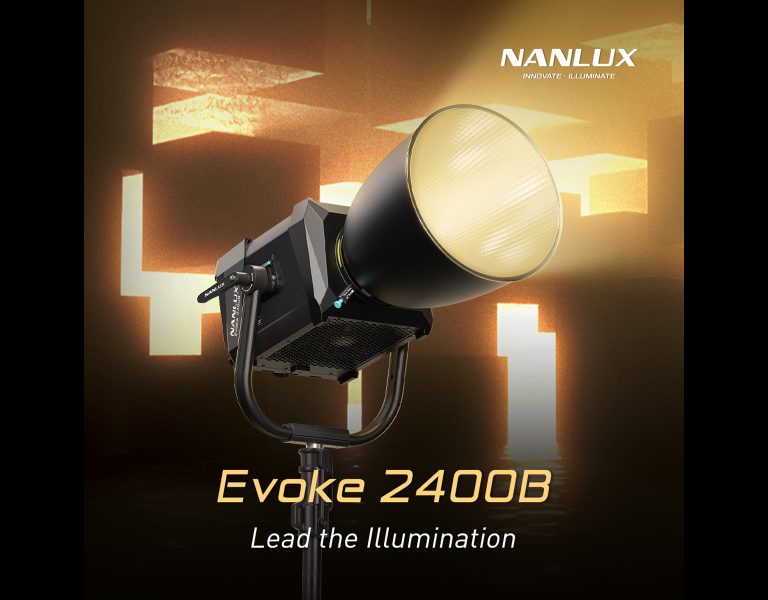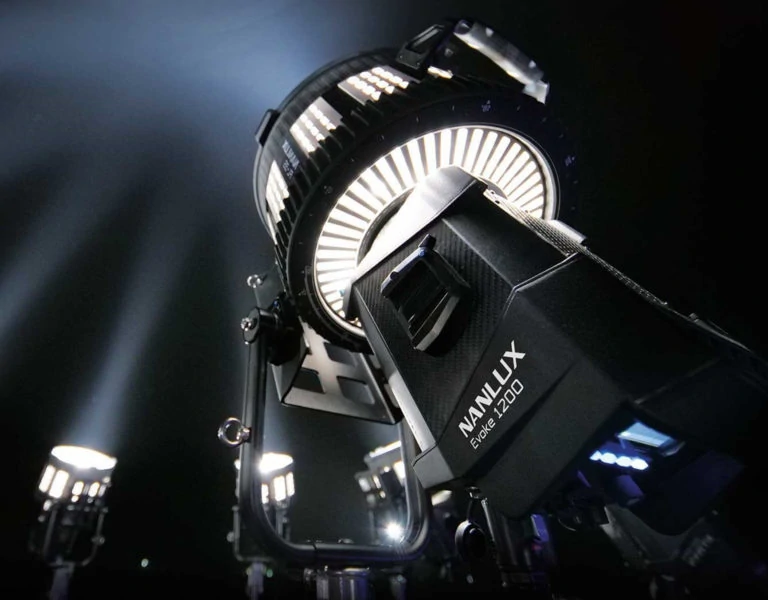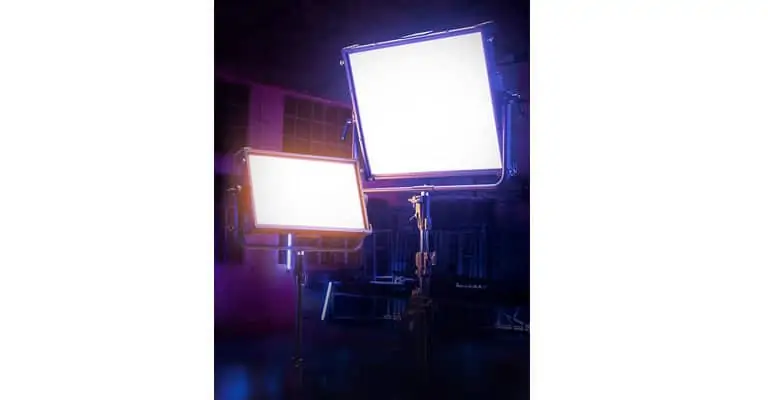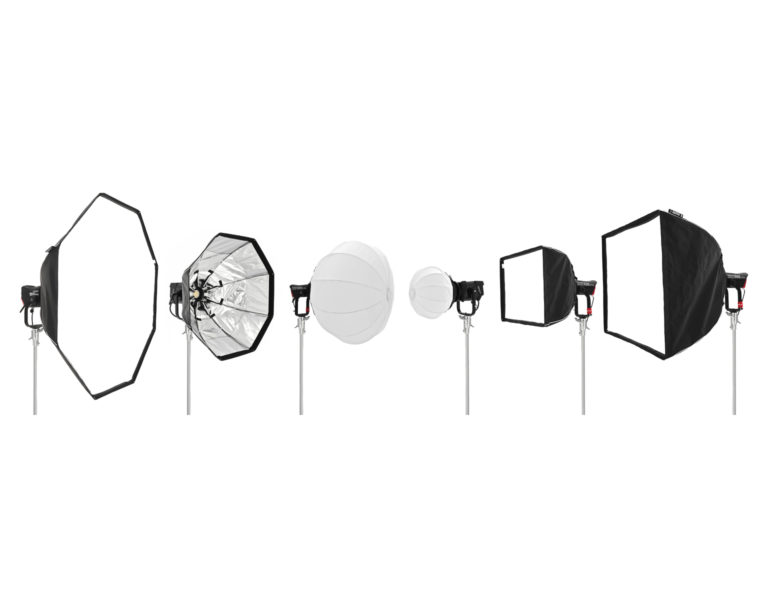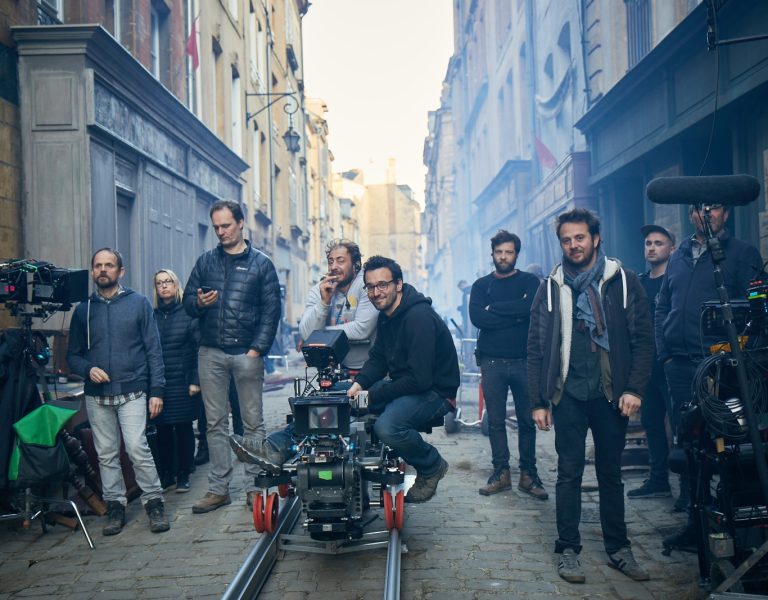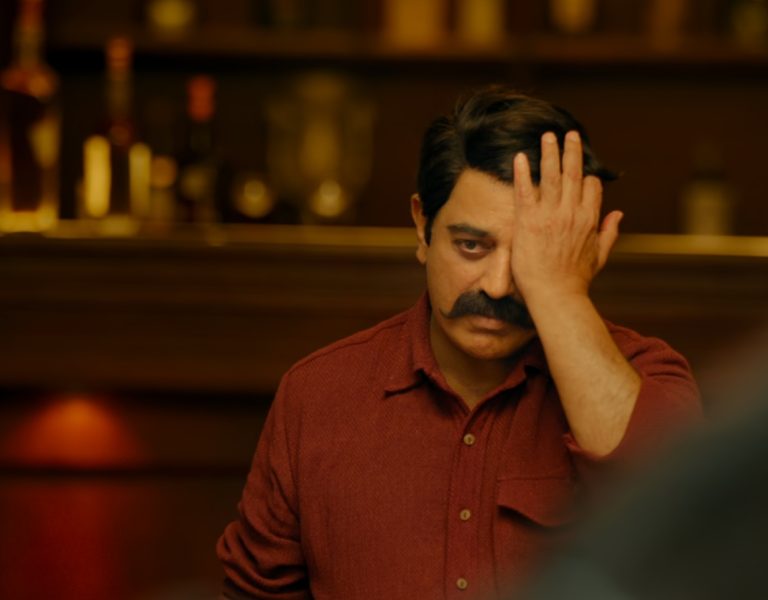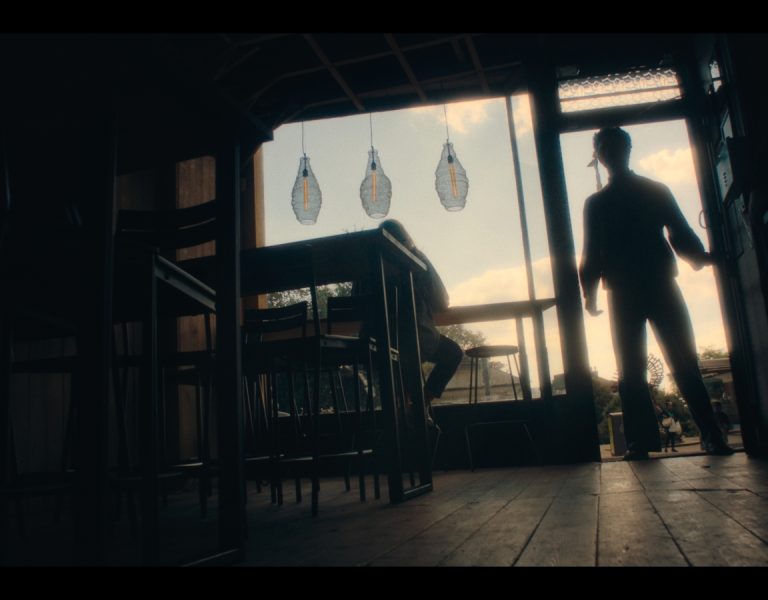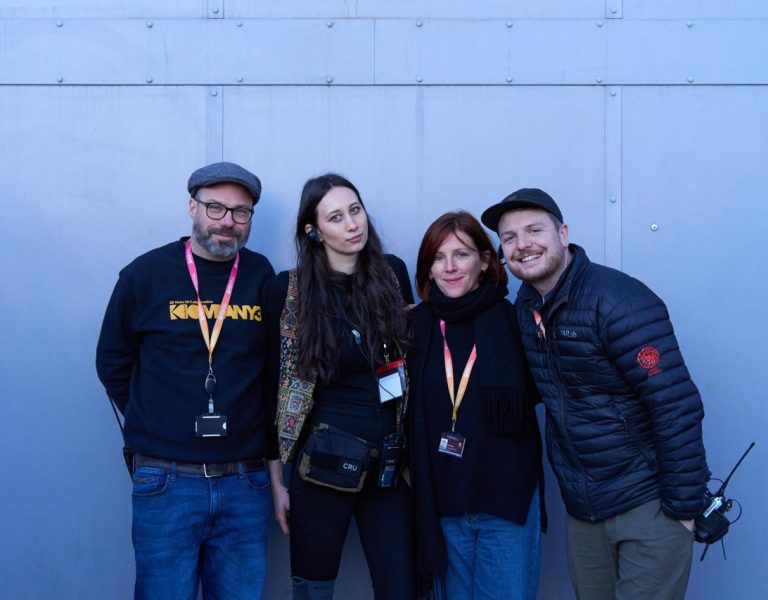Shane Hurlbut ASC hits the right note with Nanlux.
In Música, writer/director/star Rudy Mancuso’s unique début based on his life, this coming-of-age love story follows an aspiring creator with synesthesia, a phenomenon that causes sensory crossovers, such as tasting colours or feeling sounds. With a 98% rating on Rotten Tomatoes, “people are going crazy over this show,” remarks cinematographer Shane Hurlbut ASC. “It’s a unique movie. It doesn’t fit any kind of genre, which is what we were hoping for.”
Having worked with Wonderland Sound and Vision on several projects, including We Are Martial, Terminator Salvation, The Babysitter and more, “they came to me with this project and I read the script thinking, ‘that’s kind of cool, but I don’t really get it,’” says Hurlbut. “After seeing a sizzle of the diner scene that Rudy had done four or five years ago, I was running for the phone. I knew exactly how we were going to do it.” In his initial interview with Mancuso, “We talked about vision and I was coming up with all these crazy ideas. He really loved my energy.”
Following that, they met in seven three-hour brainstorming sessions, and shot-listed the movie from beginning to end. “I was able to take all that information and turn it into blocking schematics, and lighting schematics, so our team was totally set,” he said. At the suggestion of Glenn Gainor, vice president of physical production, Amazon Original Movies, Hurlbut was willing to try Nanlux lights on the show. “For me, I was wondering what can I switch out in my arsenal and the Dyno 650s and Dyno 1200s seemed to be the perfect match since I had ARRI M18s and ARRI M40s.”
Hurlbut praises the Dyno 1200 as impressive. “It has a small footprint and has the ability to go into boost mode, making it 30% brighter than an ARRI SkyPanel S360. Instead of two SkyPanels on the truck, I could have four of the 1200s and have much more output and fit them in small places.”
Show time
The show starts with a diner scene, in which Hurlbut had to keep the light consistent for two days. “I had to shelf all the sun out, and by doing this, I lost all the ambience.” He created a schematic with the Dynos bounced into 12×20 Ultra Bounces, and that bounce light is what became the ambience on their faces. “I put them all into boost mode which gave me another 1/3 of a stop increase, we had six or eight of them, and it gave them the beautiful soft light you see on their faces in the diner. The interior looks so good; it was everything that I had hoped would happen,” he explains. Despite the small budget of the film, Hurlbut had huge rigs, including rock-and-roll trusses with six 18Ks blowing into the diner, suspended but hidden by trees and trucks.
Night time
Shooting in Montclair and Newark, NJ (also known as Ironbound), there is a night scene that takes place outside, and Hurlbut wanted to put two Dynos on a cherry picker. “That is one of my favorite things we were able to do,” he says. “Because of the XY on LEDs I was able to put two Dyno 1200s up in the Condor and that emulated the sodium vapor lights that were on the street in Newark. I put them right next to each other and very far away, because I wanted the hardest shadow possible on the ground when she walks across the street. I was able to go up to the streetlight with my colour meter and match the XY to the sodium vapour and they punched it into the Dyno. It matched perfectly.”
Another scene in which Hurlbut found Nanlux to be the perfect lights was when the lead actor steps into the subway, and the steps emulate piano keys as he walks down them. “Depending on which girl he was with or upset about, the lighting reflected that. I placed two Dyno 1200s up top, and when he broke up with Haley, it was a metal halide colour. When he met Isabella and went into the subway, it was warm, rich and golden. Because we did those scenes one right after another, we were able to blast the look quickly in to match each character’s colour, mood and tone as he descended the steps.”
As Rudy works to keep his worlds from colliding, Mancuso wrote a scene with a theatrical flair: a montage in which walls open up and the lead actor walks from set to set. “In this big long ‘oner’ shot, he first goes into the country club, where he meets Haley. I put two six-foot Octa-banks, which were the Dyno 1200s, on the left and right side. I crisscrossed those through the windows, and that gave us a nice soft ambient light from outside and used an ARRI T12 for the hot sun. I used another two Dyno 1200s to fill in Rudy when he leaves that scene and sits down at the table with his mom. He then continues to another set where he meets Isabella for a smoothie, then returns back to his mother’s hair salon. Those Dynos are working there as well to give soft ambience. They were crucial in all the cues that we needed for the dimmer board and running DMX to turn them on and off.” Hurlbut elaborates that Mancuso’s idea was to present life as imperfect, “It has rough edges. He wanted it to look much more DIY, so we put lights on the floor and fired them up into muslins that were up in the ceiling,” he explains.
With only one day to pre-light, he didn’t have time to hang lights. “I put Lekos in the ground and fired those up into muslins that were in the ceiling. That was our recipe. The lights are in the shot, the minute you come in on the next set. You see all the lights, and then we land into a perfect composition; it’s totally polished, but slightly painterly. The background for the country club was not real, that was a drop obviously. We applied almost a Monet watercolour effect to it, as well as with his mom’s kitchen. The acai place was just a simple tone, it feels real but doesn’t feel real. That was the mantra of that whole piece.”
Getting in tune
With so many scenes having an element of music, or percussion, in the storyline, Hurlbut and his team were challenged from a camera perspective. In the first scene shot in the diner, when he and his crew showed up, they weren’t allowed to pre-light. Instead, his crew was told they needed to wait while 99 wireless microphones were buried in the diner, tied to a mixing board of 300 channels. When Hurlbut and his crew realised Mancuso’s directing strategy, they quickly pivoted.
“We would shoot the scene with dialogue, then we would do all the music, not on camera, but the mics were hidden and ready to go, and we recorded it live five or six times. Once Rudy liked a take, we locked that and that’s the one they played to. We shot the dialogue scenes first, then we let them go crazy with performing. With the embedded microphones, when he liked a take, then we were rolling.”
Although Hurlbut still uses traditional light fixtures, he believes LEDs are the future replacement of HMI technology. “Before, I had the whole flight of lights, from ARRI M8 to an 18K, but now I’m only getting M90s and the 18K. Within less than two years, Nanlux was easily able to take out 50% of the HMIs that I use and I don’t have to worry about gels because every HMI is a little magenta or a little green, anyway, so you always have to balance that. Some are always off, based on the age of the bulb, so some are a little warmer, some are a little cooler and you have to deal with that to get it to the 5600.
“Also, the M40 and the M18 are gel burners. If you want a hot spot, the minute you start to spot that M18 in, it literally will burn a hole into a half CTO or a full CTO gel which means you have to replace the gel all the time. With this new LED spotlight, the Evoke 2400B bi-colour, that Nanlux has, I don’t have to worry about balancing the light to 5600 because it can be anywhere from 6500 all the way to 2700 degrees.” Hurlbut emphasises that the biggest pluses are that Nanlux lights save time and money, “and that’s huge within our industry.”
-
Moving on
In recent years Nanlux has pioneered the creation of highly efficient, high-output LED lights for film and TV. A family-run company that recently celebrated its 32nd year in business, it has a well-earned reputation for reliability, backed by excellent customer support and service. Carefully working with and listening to industry professionals has helped it design fixtures that are powerful, practical, easy to operate and built for the rigours of set use. A nearly one-thousand-strong workforce and the latest manufacturing techniques, plus its own advanced factory facilities, has allowed Nanlux to control quality precisely. Its two main ranges of Dyno LED soft panels and Evoke LED spotlights are now commonplace on many sets.
The Dyno 650C and 1200C have become trusted workhorses for many DPs and gaffers around the globe thanks to their unique combination of high output, RGBWW tunability and high colour fidelity. Both are fully adjustable between 2700K to 20000K and come in a convenient form-factor providing higher output than competing fixtures. The Dyno 650C outputs 2649 lux @3m (5600K, CCT boost mode) and the Dyno 1200C outputs an incredible 5596 lux @3m (5600K, CCT boost mode).
The recently launched Evoke 2400B LED spotlight joins the range as a true HMI alternative that delivers exceptional brightness and colour accuracy, while still being able to run off a 240V 16A mains circuit at full intensity. It is IP55-rated for use outdoors and has an astounding output of 41,910 lux @3m (5600K, with 45° reflector). In addition, it also has the important ability to tune green and magenta, meaning that throughout the adjustment process, the colour temperature will always be on the Planck curve. This is done through the innovative use of extra green and magenta LED emitters.
In common with its sister Evoke 900C and Evoke 1200B fixtures, it utilises Nanlux’s innovative NL modifier mount with electronic contacts for automatic configuration. There is a dedicated FL-35E Fresnel lens offering motorised control and a zoom range from 15° to 46° available, as well as a full range of reflectors and softboxes.
Both series are designed with user-friendly controls and advanced connectivity options. They all feature DMX, RDM, Art-Net, and wireless control systems, enabling seamless integration into complex lighting setups.
The Nanlux Dyno series and Evoke 2400B LED lights combine superior brightness, colour accuracy, advanced control options, and durability, making them indispensable tools for modern cinematographers and gaffers seeking reliable, flexible, and efficient lighting solutions.
–
This article was sponsored by Nanlux.
